#blockchainapplication
Explore tagged Tumblr posts
Text
How to Kickstart Your Blockchain Development Journey

Ready to kickstart your blockchain development journey? This guide provides the essentials to get you started.
Learn key concepts like decentralization, smart contracts, and consensus mechanisms, and discover popular blockchain development platforms like Ethereum and Hyperledger.
Set up your blockchain development environment with tools and languages like Solidity and Rust, and build your first blockchain application.
Blockchain technology streamlines secure transactions, reduces compliance costs, and boosts data processing efficiency.
Start your blockchain development journey today and unlock endless possibilities for innovation!
Step-by-Step Guide to Building and Deploying Blockchain Applications Development Journey
Kickstart your blockchain journey by mastering decentralization, smart contracts, and consensus. Choose the right platform, set up your environment, and create innovative decentralized apps.
Step-1 Understanding the Fundamentals
Blockchain fundamentals include decentralization, smart contracts, consensus mechanisms, and the difference between public and private blockchains.
Decentralization: Traditional systems depend on central authorities like banks or governments to validate transactions. Blockchain, however, operates on a decentralized network of nodes, where no single entity has control. This ensures transparency, and security, and reduces the risk of fraud.
Smart Contracts: These are self-executing smart contracts where the terms of the agreement are written directly into code. Smart contracts automatically execute actions when predefined conditions are met, reducing the need for intermediaries and enhancing efficiency.
Consensus Mechanisms: Consensus mechanisms are protocols that validate transactions and maintain the integrity of the blockchain. Common mechanisms include Proof of Work, which requires computational effort to solve cryptographic puzzles, and Proof of Stake, where validators are chosen based on their stake in the network.
Public vs. Private Blockchains: What's the Difference?
Public Blockchains: These are open networks where anyone can participate, validate transactions, and view the blockchain. Examples include Bitcoin and Ethereum. They are highly decentralized and offer increased security and transparency, but may face challenges like scalability and energy consumption.
Private Blockchains: These are permissioned networks, where access is restricted to approved participants. They are often used by businesses for specific use cases like supply chain management or financial services. Private blockchains offer greater control and speed but sacrifice some degree of decentralization and transparency.
Step-2 Choosing the Right Blockchain Platform
Selecting the right blockchain platform is important for the success of your POW blockchain development project. Different blockchain platforms offer various features, scalability, and support for different use cases. Here’s an overview of popular blockchain platforms:
Ethereum
Ethereum is a top blockchain platform that supports smart contracts and decentralized applications (dApps). It's suitable for projects requiring high decentralization, with a large developer community. However, it can be costly and slow in terms of transaction processing due to its Proof of Work consensus mechanism.
Hyperledger
A permissioned blockchain platform, Hyperledger is designed for enterprises needing privacy, scalability, and control. It's ideal for blockchain development business and supply chain management applications. Hyperledger offers various frameworks like Fabric and Sawtooth that support modularity, allowing businesses to customize their blockchain development solutions.
Solana
Known for its high-speed transactions and low costs, Solana is a high-performance blockchain platform that supports decentralized finance and dApps. It uses a unique Proof of History consensus mechanism to ensure fast processing. Solana is ideal for projects requiring scalability and high throughput.
Step-3 Factors to Consider When Selecting a Platform
When choosing a blockchain platform, consider the following factors:
Scalability: How well does the platform handle increasing amounts of data and transactions? Ensure the platform can scale with your project's growth.
Security: Does the platform offer smooth security measures to protect data and transactions? Evaluate encryption methods and consensus mechanisms.
Cost: Some platforms, like Ethereum, can have high transaction fees, especially during network congestion. Assess the cost of deploying and maintaining the blockchain platform.
Development Community and Support: Blockchain platforms with active communities, like Ethereum, have abundant resources and developer support, which can accelerate development.
Use Case Suitability: Choose a blockchain platform based on your specific needs. For example, use Ethereum for decentralized finance, Hyperledger for enterprise applications, and Solana for high-speed transactions.
Consensus Mechanism: The choice between Proof of Work, Proof of Stake, and other mechanisms impacts energy consumption, transaction speed, and decentralization.
Step-4 Setting Up Your Development Environment
To start blockchain development, you'll need the right blockchain development tools and software:
Blockchain Node: Use tools like Geth (Ethereum), Solana CLI, or Hyperledger Fabric to set up a blockchain node for interaction.
IDE: Use Remix (for Ethereum), Visual Studio Code, or IntelliJ IDEA for coding smart contracts and dApps.
Blockchain Frameworks: use frameworks like Truffle and Hardhat to compile and deploy smart contracts. Use Web3.js or ethers.js for Ethereum interactions.
Testnets: Deploy contracts on Rinkeby (Ethereum) or Solana Testnet to test without real assets.
Programming Languages for Blockchain
Solidity: Mainly for Ethereum smart contracts.
Rust: Used for high-performance blockchains like Solana.
Go: Common for Hyperledger and other infrastructure projects.
Vyper: A Python-like language for Ethereum contracts.
Step-5 Building Your First Blockchain Application
Building your first blockchain app involves creating and deploying smart contracts, followed by integrating the front-end and back-end development.
Creating and Deploying Smart Contracts: Write smart contracts (typically in Solidity or Rust), test them locally using frameworks like Truffle or Hardhat, and then deploy them to the blockchain.
Frontend and Backend Integration: Integrate the front end with smart contracts using libraries like Web3.js or ethers.js. Set up the backend (Node.js, Express) for off-chain data storage and additional functionality. Ensure secure interaction between the frontend, backend, and blockchain.
Step-6 Testing and Debugging Your Blockchain Solution
Testing and debugging are critical in ensuring your blockchain application works as expected and is secure.
Tools for Testing Smart Contracts
Truffle Suite: Provides a complete testing framework for smart contracts. You can write tests using JavaScript or Solidity and run them on local Ethereum test networks.
Hardhat: Another popular Ethereum development environment that allows developers to test, debug, and deploy smart contracts. It also provides a local Ethereum network for testing.
Ganache: A personal Ethereum blockchain used to test contracts before deploying them to the mainnet or public testnets.
Remix IDE: A browser-based IDE that allows for testing and deploying Solidity contracts with an inbuilt testing environment.
Ensuring Security and Efficiency
Security Audits: Conduct thorough audits of smart contracts to prevent common vulnerabilities like reentrancy attacks, overflow/underflow bugs, and improper access control.
Gas Optimization: Optimize smart contracts to minimize transaction costs (gas fees) by reducing unnecessary computations and storage usage.
Automated Testing: Use tools like MythX for automated security scanning of smart contracts to identify vulnerabilities.
Real-World Scenarios: Test the smart contracts under simulated real-world conditions using testnets, and engage in bug bounty programs to gather feedback from the community.
By using these tools and practices, you ensure the security, functionality, and efficiency of your blockchain application before going live.
Step-7 Deploying Your Blockchain Application
Deploying a blockchain application involves several stages, from launching on the mainnet to addressing ongoing costs and challenges.
Steps for Mainnet Deployment
Testing on Testnets: Before moving to the mainnet, thoroughly test your application on test networks (e.g., Rinkeby for Ethereum or Solana Testnet) to ensure that everything functions properly.
Smart Contract Deployment: Once tests are successful, deploy the smart contracts to the mainnet using tools like Truffle, Hardhat, or Remix IDE.
Transaction Verification: Confirm transactions and operations on the blockchain, ensuring that all interactions are recorded and verifiable.
Cost and Maintenance Considerations
Transaction Fees (Gas Fees): Deployment and regular use of blockchain applications can incur transaction fees. For Ethereum-based applications, gas fees may vary depending on network congestion.
Ongoing Maintenance: Blockchain applications need regular updates, bug fixes, and security patches, which require continual monitoring and maintenance.
Step-8 Common Challenges in Blockchain Development
Scalability Issues: Blockchain networks can experience slow transaction speeds as they grow. Solutions such as Layer-2 solutions (e.g., Polygon) or sharding are often explored.
Security Risks: Blockchain applications are vulnerable to attacks like 51% attacks, reentrancy attacks, and smart contract development exploits. Regular audits, adopting best practices, and using security tools like MythX can mitigate risks.
Interoperability: Many blockchains operate in isolation, making it challenging for applications to communicate across different platforms.
Future Trends in Blockchain Development
Blockchain technology is evolving with several key trends shaping its future:
Emerging Technologies
Quantum Computing: Quantum advancements promise faster data processing but challenge current blockchain encryption, requiring quantum-resistant blockchain solutions.
AI & Blockchain: AI enhances blockchain by optimizing processes like fraud detection and smart contract automation.
Privacy-Enhancing Technologies (PETs): Innovations like Zero-Knowledge Proofs (ZKPs) ensure secure, private transactions while maintaining transparency.
Web3 and Beyond
Web3: Blockchain enables decentralized apps (dApps) where users control data, fostering privacy and transparency.
Self-Sovereign Identity: Blockchain lets individuals control their digital identity, removing reliance on centralized authorities.
Tokenization & NFTs: Blockchain allows tokenized assets and NFTs, to transform ownership and create new investment opportunities.
Governance & Trust Blockchain introduces decentralized governance models through DAOs, enhancing transparency and user control.
It will redefine ownership and trust in the digital world, enabling greater accountability and decentralization.
As blockchain continues to evolve, it will drive innovations in Web3, smart cities, and digital asset ownership.
Conclusion
Blockchain development technology is reshaping industries with its decentralized, secure, and transparent solutions. By understanding key concepts, choosing the right platform, and developing blockchain applications, Blockchain developers can harness its full potential.
Emerging trends like AI, quantum computing, and privacy tech will drive further innovation, while Web3 and decentralized governance will redefine ownership and trust. Blockchain offers endless opportunities for top blockchain developers to shape the future of digital ecosystems.
Kickstart your blockchain development journey with Comfygen! Our expert blockchain development team delivers innovative, secure, and scalable blockchain solutions customized to your business needs. Contact us today for a consultation!
FAQs
What is blockchain development?
Blockchain development involves creating decentralized applications (dApps) using blockchain technology, ensuring secure, transparent, and immutable transactions.
How can Comfygen help with blockchain development?
Comfygen offers end-to-end blockchain development services, including smart contract development, platform selection, dApp development, and security blockchain development solutions customized to your business requirements.
What platforms do you work with?
We work with popular blockchain platforms like Ethereum, Hyperledger, Solana, and more, based on your project's needs.
Do I need technical knowledge to start blockchain development?
While technical knowledge is beneficial, Comfygen’s expert team can guide you through the process, ensuring you understand every step and help you make informed decisions.
What are the benefits of using blockchain technology for my business?
Blockchain enhances security, transparency, and trust, reduces costs, and improves efficiency. It’s ideal for applications in finance, supply chain, healthcare, and more.
How long does it take to develop a blockchain application?
The timeline varies depending on the complexity of the project, but our team works efficiently to deliver high-quality blockchain solutions within a reasonable timeframe.
Can Comfygen help with blockchain application deployment?
Yes! We handle everything from development to deployment and maintenance, ensuring your blockchain application runs smoothly on the mainnet.
How can I get started with Comfygen's blockchain development services?
Simply reach out to us for a consultation, and our team will help you define your requirements and start your blockchain journey!
#blockchaindevelopment#blockchainapplication#smartcontractdevelopment#POA blockchain development#blockchain
0 notes
Text
Understanding Blockchain Technology: Beyond Bitcoin

Introduction
Blockchain technology, often synonymous with Bitcoin, is a revolutionary system that has far-reaching implications beyond its initial use in cryptocurrency. While Bitcoin introduced the world to the concept of a decentralized ledger, blockchain's potential extends well beyond digital currencies. This article explores the fundamentals of blockchain technology and delves into its various applications across different industries.
What is Blockchain Technology?
At its core, blockchain is a decentralized, distributed ledger that records transactions across many computers in such a way that the registered transactions cannot be altered retroactively. This ensures transparency and security. Each block in the chain contains a list of transactions, and once a block is completed, it is added to the chain in a linear, chronological order.
Key features of blockchain include:
Transparency: All participants in the network can see the transactions recorded on the blockchain.
Immutability: Once data is recorded on the blockchain, it cannot be altered or deleted.
Security: Transactions are encrypted, and the decentralized nature of blockchain makes it highly secure against hacks and fraud.
Blockchain Beyond Bitcoin
While Bitcoin brought blockchain into the spotlight, other cryptocurrencies like Ethereum and Ripple have expanded its use cases. Ethereum, for example, introduced the concept of smart contracts—self-executing contracts where the terms are directly written into code. These smart contracts enable decentralized applications (DApps) that operate without the need for a central authority.
Applications of Blockchain Technology
Finance:
Decentralized Finance (DeFi): DeFi platforms leverage blockchain to create financial products and services that are open, permissionless, and transparent. These include lending, borrowing, and trading without intermediaries.
Cross-border Payments: Blockchain simplifies and speeds up cross-border transactions while reducing costs and increasing security.
Fraud Reduction: The transparency and immutability of blockchain make it harder for fraud to occur, as all transactions are visible and verifiable.
Supply Chain Management:
Tracking and Transparency: Blockchain provides end-to-end visibility of the supply chain, ensuring that all parties can track the movement and origin of goods.
Reducing Fraud: By recording every transaction, blockchain helps prevent fraud and counterfeiting, ensuring the authenticity of products.
Healthcare:
Secure Data Sharing: Blockchain allows for secure sharing of patient data between healthcare providers while maintaining privacy and consent.
Drug Traceability: Blockchain helps track pharmaceuticals through the supply chain, reducing the risk of counterfeit drugs.
Voting Systems:
Secure Elections: Blockchain can provide a transparent and tamper-proof system for voting, ensuring that each vote is recorded and counted accurately.
Increasing Voter Participation: The security and convenience of blockchain-based voting could lead to higher voter turnout and greater confidence in electoral systems.
Real Estate:
Property Transactions: Blockchain can streamline property transactions by reducing paperwork, ensuring transparency, and preventing fraud.
Record-Keeping: Immutable records of property ownership and transactions enhance security and trust in the real estate market.
Challenges and Limitations
Despite its potential, blockchain technology faces several challenges:
Scalability: The ability of blockchain networks to handle a large number of transactions per second is limited, impacting its adoption in high-volume industries.
Energy Consumption: Blockchain, particularly proof-of-work systems like Bitcoin, requires significant energy, raising concerns about its environmental impact.
Regulatory Challenges: The decentralized and borderless nature of blockchain poses regulatory and legal challenges, as governments and institutions seek to manage and control its use.
The Future of Blockchain Technology
The future of blockchain looks promising, with continuous advancements and innovations. Potential developments include improved scalability solutions like sharding and proof-of-stake consensus mechanisms, which aim to reduce energy consumption and increase transaction speeds. As blockchain technology matures, its adoption across various industries is expected to grow, potentially transforming the way we conduct business, manage data, and interact with digital systems.
Conclusion
Blockchain technology, initially popularized by Bitcoin, holds immense potential beyond cryptocurrencies. Its applications in finance, supply chain management, healthcare, voting, and real estate demonstrate its versatility and transformative power. While challenges remain, ongoing innovations and growing interest in blockchain suggest a future where this technology plays a crucial role in various aspects of our lives.
#blockchain#Bitcoin#blockchaintechnology#cryptocurrency#decentralizedfinance#DeFi#supplychain#healthcare#votingsystems#realestate#blockchainapplications#smartcontracts#DApps#digitalledger#blockchainsecurity#blockchainfuture#blockchainadoption#techinnovation#financial education#financial empowerment#financial experts#finance#digitalcurrency#unplugged financial#globaleconomy
4 notes
·
View notes
Text
Top 10 Blockchain Solutions
Blockchain is about much more than just digital currency. 🧠
From secure payments to smarter supply chains, it’s transforming how businesses work. But which platforms are actually worth your time?
We rounded up the Top 10 Blockchain Solutions making real impact in finance, logistics, healthcare, and more. 🌐
Check out the full list now! 👉
📬 Want more practical tools without the tech overwhelm? Subscribe and grab your free AI Profit Masterclass eBook. 📘 👉
Stay informed. Stay ahead. The future is being built now.
0 notes
Text

Blockchain Applications in Financial Services: A Game-Changer
The financial sector is undergoing a massive transformation, thanks to blockchain technology! With its ability to enhance security, reduce costs, and streamline operations, blockchain is powering innovations in cross-border payments, fraud detection, and smart contracts. Check out this infographic to uncover the practical applications of blockchain in finance and why it’s becoming a must-have in the industry.
Want to dive deeper into how blockchain is revolutionizing financial services? Tap the link to access our comprehensive blog!
#BlockchainFinance#FintechInnovations#DecentralizedTech#FinancialServices#DigitalFinance#BlockchainApplications#FutureOfFinance
0 notes
Text
Blockchain technology is revolutionizing the digital world by offering secure, decentralized solutions for various industries. Learn how blockchain works and its impact on finance, healthcare, and beyond..
#blockchain#blockchaintechnology#decentralizedfinance#blockchainsecurity#blockchainapplications#smartcontracts
0 notes
Text
Cryptocurrency and Blockchain Technology

Cryptocurrency and blockchain technology have piqued the interest of investors, technologists, and legislators alike, promising to transform the financial landscape. This article will look at the latest trends, advancements, and prospective effects of cryptocurrency and blockchain technology on banking.
The Evolution of Cryptocurrency
Bitcoin, created in 2009 by an anonymous individual or group known as Satoshi Nakamoto, marked the beginning of the cryptocurrency era. Since then, thousands of alternative cryptocurrencies, or altcoins, have emerged, each with unique features and purposes. Growth of Blockchain Technology Blockchain, the underlying technology behind cryptocurrencies, has also evolved significantly. Originally devised as to record Bitcoin transactions, blockchain technology is now being explored for a wide range of applications beyond digital currencies.
Latest Trends in Cryptocurrency
Decentralized finance, or DeFi, has emerged as a major trend in the bitcoin sector. DeFi platforms seek to duplicate traditional financial services including lending, borrowing, and trading without the use of intermediaries such as banks. Non-Fungible Tokens (NFTs) Non-fungible tokens (NFTs) have received a lot of interest due to their capacity to represent ownership of unique digital goods like artwork, collectibles, and digital real estate. The NFT industry has expanded rapidly, attracting artists, investors, and collectors alike. Central Bank Digital Currencies (CBDCs) Central banks are looking at the prospect of releasing their digital currency, known as central bank digital currencies, or CBDCs. These digital currencies seek to increase efficiency, lower expenses, and promote financial inclusion.
Developments in Blockchain Technology
Blockchain developers prioritize interoperability and scalability. Projects such as Polkadot, Cosmos, and Ethereum 2.0 are developing ways to improve blockchain network interoperability and scalability. Enhanced Security and Privacy Advances in cryptography approaches and privacy-preserving technology improve blockchain network security and privacy. These advancements are critical to establishing trust and confidence in blockchain-based systems.
Potential Impact on the Financial Landscape
Cryptocurrency and blockchain technology can potentially disrupt established banking institutions by providing faster, less expensive, and more inclusive financial services. This disruption could result in a shift of power in the banking industry. Financial Inclusion and Access Blockchain technology has the potential to provide financial services to the unbanked and underbanked populations worldwide, opening up new opportunities for economic empowerment and financial inclusion. Regulatory Challenges and Opportunities The rapid growth of cryptocurrency and blockchain technology has prompted governments and regulatory bodies to develop frameworks and policies to address concerns such as consumer protection, money laundering, and tax evasion. Clear and balanced regulation is essential to foster innovation while ensuring investor protection and financial stability.
Conclusion
Finally, cryptocurrencies and blockchain technology are fundamentally changing the financial world. The future of finance appears to be becoming more decentralized, digital, and inclusive, with the rise of non-fungible tokens, the research of central bank digital currencies, and advancements in blockchain technology. As these technologies advance and develop, their impact on the financial environment will only increase, ushering in a new era of innovation and opportunity. Read the full article
#Blockchain#BlockchainApplications#BlockchainDevelopments#BlockchainSecurity.#CentralBankDigitalCurrency(CBDC)#CryptoInvestments#CryptocurrencyRegulation#CryptocurrencyTrends#DecentralizedFinance(DeFi)#DigitalAssets#DigitalCurrency#FinancialInnovation#FinancialTechnology(FinTech)#Non-FungibleTokens(NFTs)
0 notes
Text
Blockchain technology is super popular and has been getting a lot of attention over the last ten years. People suppose it’s a massive deal, kind of like how the internet changed effects. It’s a big deal because it keeps track of every transaction, and everyone can see it.
0 notes
Text
Tracking the Future: Blockchain-Enabled Waste Tracking Market to Reach $12.3B by 2034
Blockchain-Enabled Waste Tracking Market is revolutionizing sustainable waste management by integrating blockchain technology to ensure transparency, accountability, and efficiency. This innovative approach facilitates real-time tracking, secure data sharing, and immutable record-keeping across waste generation, transportation, and disposal processes.
To Request Sample Report : https://www.globalinsightservices.com/request-sample/?id=GIS10895 &utm_source=SnehaPatil&utm_medium=Article
In 2023, the market processed an impressive 320 million metric tons of waste. The industrial waste segment dominated with a 45% market share, driven by strict regulations and the need for efficient management. Municipal waste captured 30%, while hazardous waste held 25%, reflecting growing awareness and adherence to environmental compliance standards.
North America leads the market due to stringent environmental regulations and a high adoption rate of advanced technologies. Europe ranks second, fueled by strong governmental policies and a focus on sustainability, with Germany setting the benchmark through proactive waste management strategies. The Asia-Pacific region is emerging as a key growth area, driven by rapid urbanization and rising environmental awareness.
Market segmentation highlights public, private, consortium, and hybrid blockchain types, with applications spanning municipal, industrial, hazardous, e-waste, and construction waste management. Software platforms dominate the market, offering advanced tracking and data analytics, while IoT-enabled hardware solutions are gaining traction for precise monitoring.
Key players like IBM, SAP, and Oracle are driving innovation with blockchain-powered waste tracking platforms, ensuring compliance, traceability, and optimized resource recovery. Regulatory frameworks, particularly in the EU and North America, play a crucial role in shaping the market’s growth trajectory.
With a projected CAGR of 15% through 2033 and blockchain investments set to increase by 20%, the market is poised to play a pivotal role in fostering sustainability and advancing circular economy initiatives.
#BlockchainForSustainability #WasteManagementInnovation #CircularEconomy #EnvironmentalTech #IoTInWasteTracking #DataTransparency #SmartContracts #EcoSolutions #SustainableFuture #WasteTrackingRevolution #GreenTech #ZeroWasteGoals #BlockchainApplications #DigitalTransformation
0 notes
Text
𝐑𝐞𝐯𝐨𝐥𝐮𝐭𝐢𝐨𝐧𝐢𝐳𝐞 𝐘𝐨𝐮𝐫 𝐁𝐮𝐬𝐢𝐧𝐞𝐬𝐬 𝐰𝐢𝐭𝐡 𝐁𝐥𝐨𝐜𝐤𝐜𝐡𝐚𝐢𝐧 𝐈𝐧𝐧𝐨𝐯𝐚𝐭𝐢𝐨𝐧!
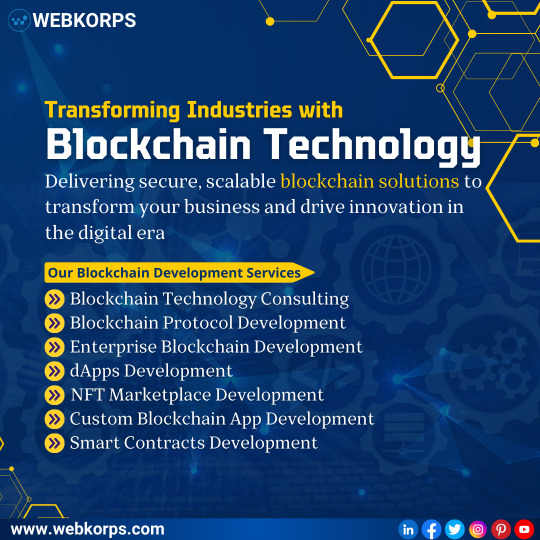
The future is #decentralized, and WebKorps is here to lead you into the next #digitaltransformation era.
From seamless #smartcontracts and cutting-edge #NFT marketplaces to robust custom #blockchainapplications, we deliver secure, scalable #solutions tailored to empower your #business.
Whether you need expert #blockchain consulting, enterprise-grade development, or advanced #protocol creation, we’ve got you covered. Unlock transparency, efficiency, and unparalleled growth opportunities with our blockchain expertise.
Why wait? The blockchain revolution is now. Partner with WebKorps to transform your vision into reality. Visit now to know more. 👉https://www.webkorps.com
#BlockchainRevolution#TechInnovation#BlockchainSolutions#DigitalFuture#NFTMarketplace#SmartContractDevelopment#CustomBlockchain#BusinessTransformation#WebKorps#webkorpsservices#business#innovation#itsolutionsforbusiness#ITsolutionsprovider#ITservices#ITsolutions#businesssolution#blockchaindevelopmentcompany#blockchainsolutionsprovider#BlockchainDevelopment#BlockchainTechnology#DecentralizedFuture#EnterpriseBlockchain#dAppsDevelopment#SecureSolutions#ScalableBlockchain#SmartContracts#BlockchainConsulting#DigitalTransformation#InnovativeSolutions
0 notes
Text
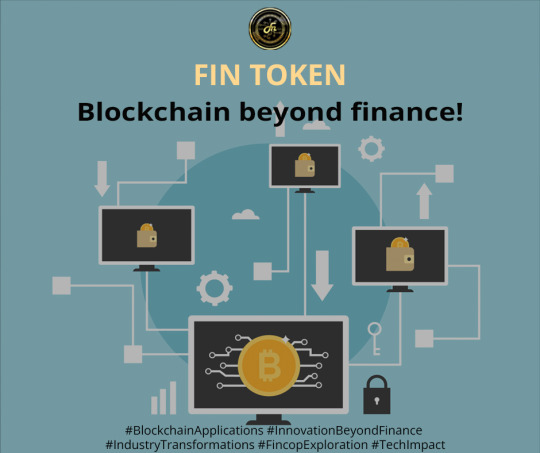
Blockchain beyond finance!
Explore the diverse applications of blockchain technology in supply chain management, healthcare, identity verification, and more with Fincop.
#BlockchainApplications #InnovationBeyondFinance #IndustryTransformations #FincopExploration #TechImpact
0 notes
Link
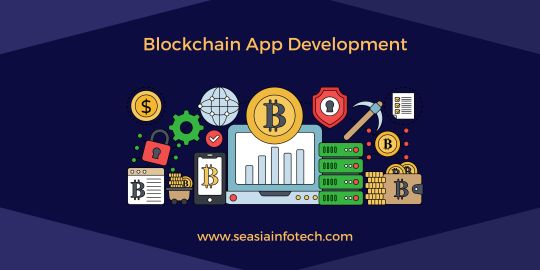
Blockchain technology is the new catchword, but few people are familiar with it. It is primarily due to the fact that many businesses have recognized the potential of blockchain and have integrated its various use cases into their operations. But how this technology can be beneficial for your firm? To know more check out this blog.
#blockchain#Blockchainapplication#Blockchainapplicationdevelopment#Blockchaintechnology#seasiainfotech
0 notes
Text
Top 10 Blockchain Solutions
Blockchain isn’t just about Bitcoin anymore.
It’s changing how businesses operate—from making transactions more secure to improving how supply chains are tracked. The challenge now? Knowing which blockchain platforms are actually useful and worth paying attention to.
If you’ve been curious but unsure where to start, we’ve got you covered.
We pulled together a list of the Top 10 Blockchain Solutions making a real difference in areas like finance, logistics, data security, and even healthcare. These aren’t just buzzwords. These are tools being used right now to solve real problems.
🌐 Want to see what made the list? Read the full blog now! 👉
📬 And if you enjoy tools that make tech feel more useful and less overwhelming, Subscribe to our newsletter and get your free copy of the AI Profit Masterclass eBook 📘. It’s full of practical insights that help you stay ahead without getting lost in the tech talk. 👉
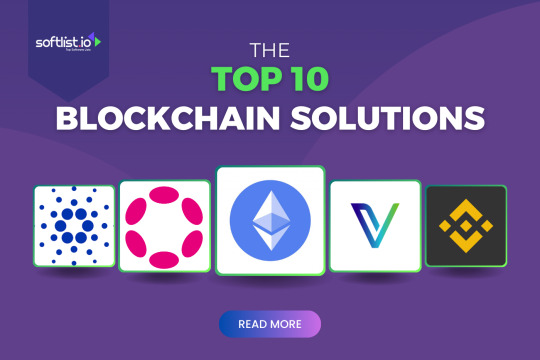
0 notes
Photo

Coming your way soon… Stay tuned ! ⏳ Visit us @ www.crypken.com
0 notes
Text
Take your business to the next level with Blockchain Application Development
Blockchain is a widely used technology that powers applications thanks to its decentralized nature. A blockchain does not have a server that acts as a middleman between users exchanging data, messages, etc. People trust blockchain technology because of its rising popularity and promising features. Because of the numerous opportunities this creates for various industries, blockchain application development is important for many businesses and entrepreneurs. The process of creating a blockchain application involves several steps. If you are an ambitious crypto entrepreneur planning to develop a feature-packed blockchain application, you should work with a reputable company that develops blockchain applications and can provide you with the best services at a reasonable price.
#BlockchainApplication#BlockchainApplicationDevelopment#BlockchainAppDevelopment#BlockchainDevelopment#Blockchain
0 notes
Text
The Internet of Things for connecting devices to human value
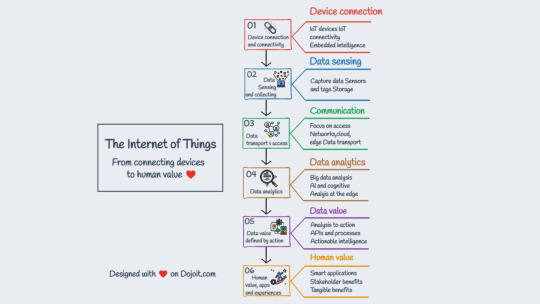
The Internet of Things for connecting devices to human value
Resource Link: https://tinyurl.com/35tr29w7
#blockchaindevelopmentplatform#cloudsecured#blockchainapplication#blockchainnetwork#web3#nftprojects#applicationdeveloper#cloudblockchain#blockchainapplications#internetofthings#iot
0 notes
Photo

A Blockchain network is a technical infrastructure that provides ledger and smart chain code services to applications. . To know more about us visit: https://givemexpert.com/blockchain.php
#blockchain#blockchainsolution#blockchainapplication#blockchaindevelopment#blockchainsoftware#blockchainservices#bitcoin#blockchaintechnology#marketing#givemexpert#service#itservices
0 notes